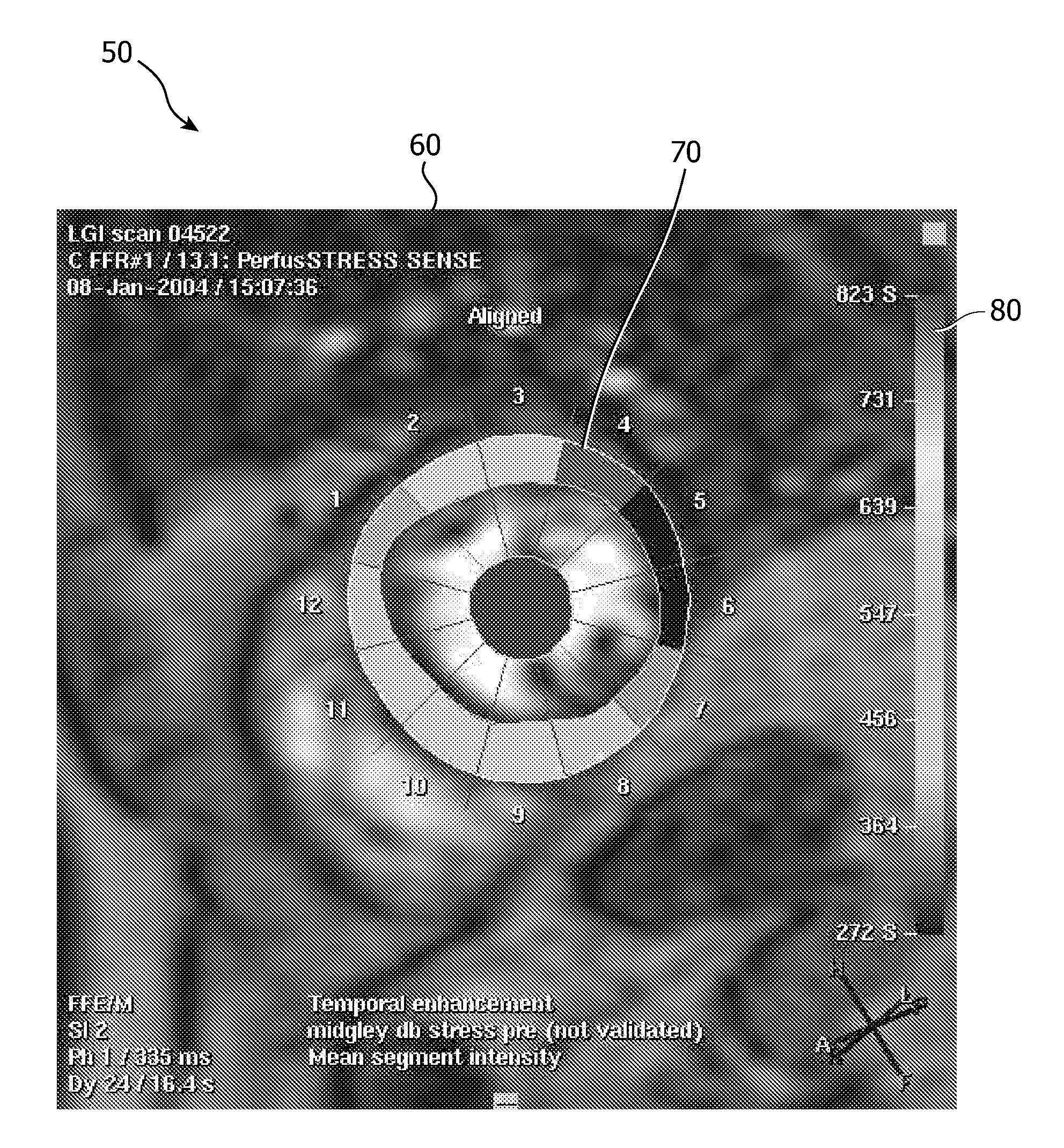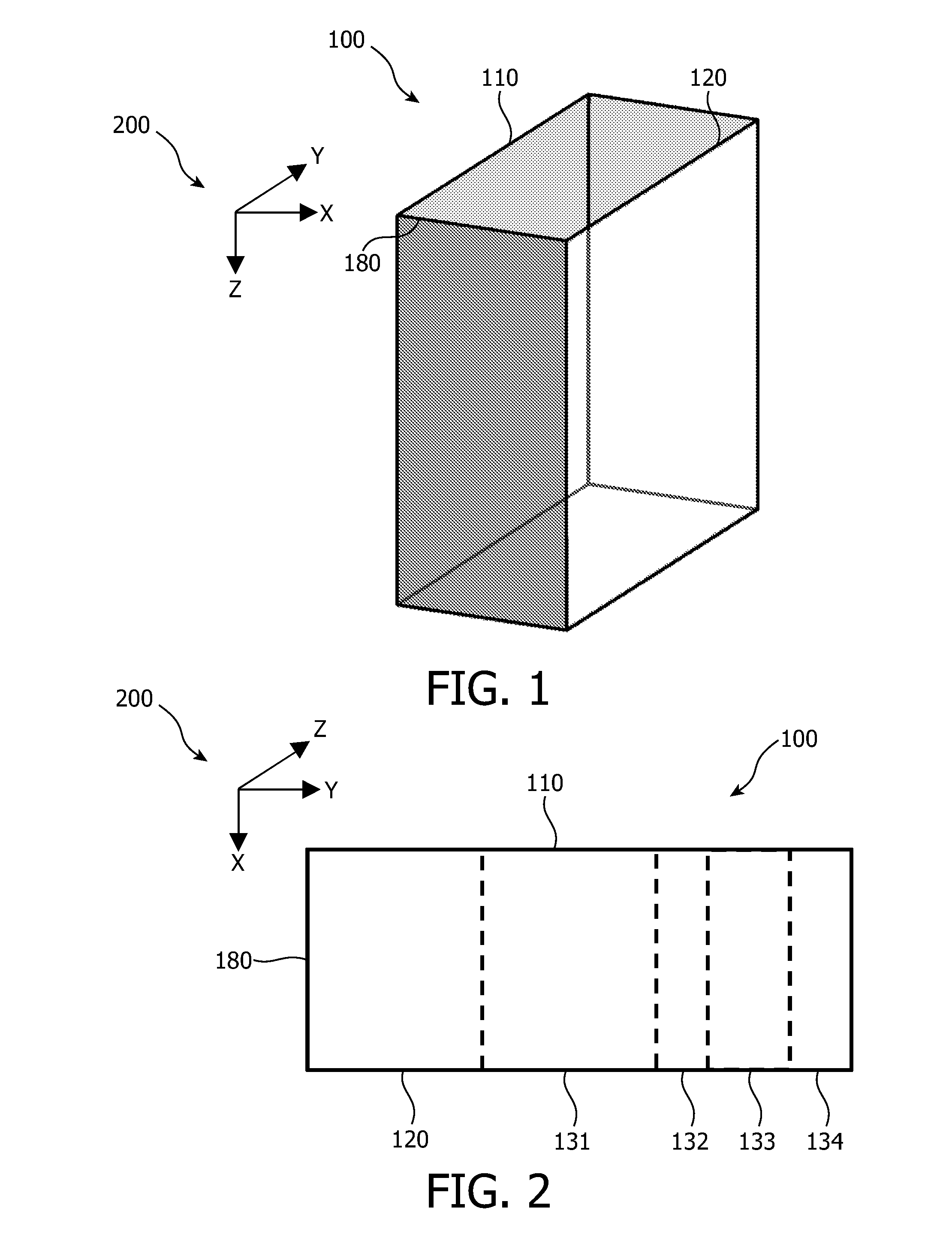Visualizing a time-variant parameter in a biological structure
a biological structure and time-variant technology, applied in image enhancement, tomography, instruments, etc., can solve the problems of difficult to relate the visualization to the actual anatomy, and the health care professional is presented with an ever increasing complexity of visualization data, so as to enhance the visualization of perfusion in the myocardium
- Summary
- Abstract
- Description
- Claims
- Application Information
AI Technical Summary
Benefits of technology
Problems solved by technology
Method used
Image
Examples
Embodiment Construction
[0049]FIG. 1 depicts a biological structure 100 for which a representation may be determined. The structure 100 extends in mutually perpendicular X, Y and Z directions 200. These directions 200 are chosen arbitrarily—any other coordinate system or convention may be used. The structure 100 is defined by a first boundary 110 and a second boundary 120, each boundary extending in YZ planes. The structure is also bounded by an XY plane 180.
[0050]The skilled person will realize that the structure 100 and its boundaries here described do not necessarily coincide with the anatomical extent of biological tissue. For example, the boundaries of the structure 100 may coincide with the walls of a blood vessel or tissue walls, such as the endocardial and epicardial layers of the myocardium, but they may also be selected to define a volume of interest for imaging purposes inside or outside such walls. Similarly, any boundaries in the Z direction may also be arbitrarily selected. Typically, however...
PUM
 Login to View More
Login to View More Abstract
Description
Claims
Application Information
 Login to View More
Login to View More - R&D
- Intellectual Property
- Life Sciences
- Materials
- Tech Scout
- Unparalleled Data Quality
- Higher Quality Content
- 60% Fewer Hallucinations
Browse by: Latest US Patents, China's latest patents, Technical Efficacy Thesaurus, Application Domain, Technology Topic, Popular Technical Reports.
© 2025 PatSnap. All rights reserved.Legal|Privacy policy|Modern Slavery Act Transparency Statement|Sitemap|About US| Contact US: help@patsnap.com



